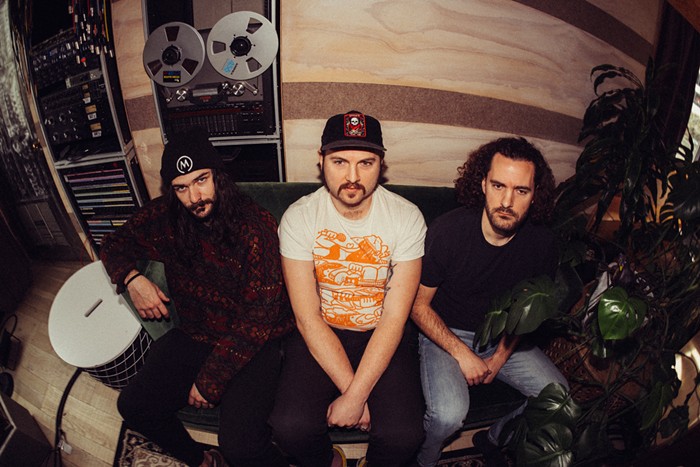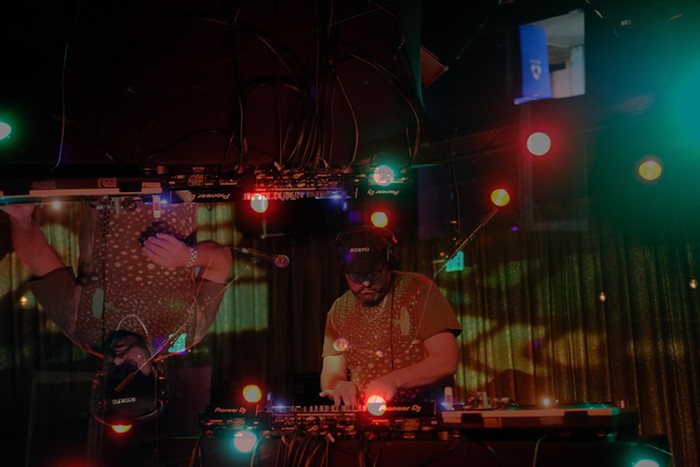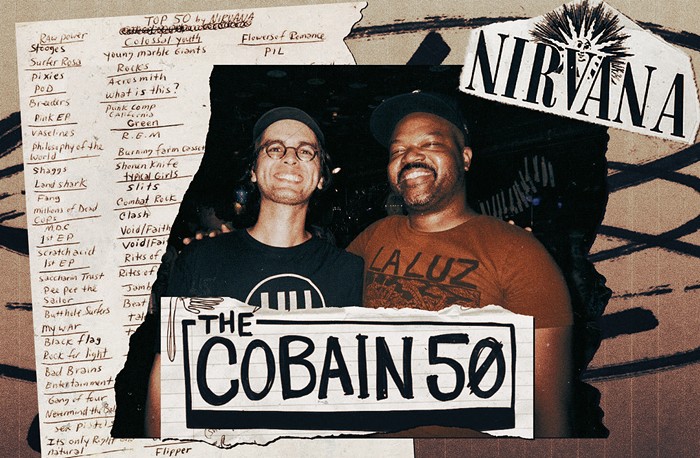I’m standing by the brass pig at Pike Place Market waiting for Gordon Hempton, whose numerous discs—I especially prize Tennessee Nightwalk and Dawn Chorus—teem with pristine, high-fidelity recordings made around the world. From the Kalahari Desert to the jungles of Belize, Hempton has taken his microphones just about everywhere.
Feeling foolish because I can't remember what he looks like, I wait, savoring snippets of passing conversation punctuated by the chorus of fishmongers bellowing behind me, "Clean the crab! Clean the crab!"
Then I spot the only other person doing what I am doing: listening. It must be him. Hempton is standing very still about 10 feet away. We greet each other, and at Pike Pub, Hempton tells me about the upcoming reading (Tues April 14, Town Hall, 7:30 pm, $5) for his book, One Square Inch of Silence: One Man's Search for Natural Silence in a Noisy World (Free Press). Cowritten with John Grossmann, Hempton's compelling tale grew out of his experiences in Olympic National Park, just a ferry ride away on the Olympic Peninsula.
"Of all 390 parks in the National Park System," attests Hempton, "Olympic National Park is the listener's Yosemite—a place of quiet and sonic diversity." Nestled inside the park is what Hempton calls OSI, short for One Square Inch of Silence, a sanctuary he's designated to fulfill a surprisingly hard-to-attain goal: a place to listen without hearing the sounds of human activity.
The chief sonic intruder at OSI? Airplanes. Recalling a meeting with bio-acoustician Kurt Fristrup, Hempton assails the ear-smothering power of engines: "When a jet is flying overhead, your aural world has shrunk."
One Square Inch chronicles Hempton's cross-country journey to Washington, D.C., to meet with the FAA, National Park Service officials, and Senator Maria Cantwell to advocate for One Square Inch of Silence in Olympic National Park. Along the way, Hempton visits and listens inside Benaroya Hall, an anechoic chamber in Minneapolis, the Aearo factory (which manufactures ear protection for the military), the Lincoln Memorial, and many other sonically intriguing sites.
In D.C., Hempton takes his case to government officials, explaining that by protecting one square inch from human-made sounds, up to a thousand square miles of surrounding quiet can be preserved: "I've been to every one of our United States in search of quiet," he tells them, alluding to his thousands of hours spent recording in the American wilderness. "I believe quite confidently that there is no natural quiet left east of the Mississippi River, and that the noise-free interval—that time between noise events—is generally under a minute when you're west of the Mississippi River. Sometimes it's a few minutes, and if it exceeds 15 minutes during daylight hours, that's truly exceptional."
Singling out the lush centerpiece of Olympic National Park, Hempton concludes, "The Hoh Valley is the only place I've been to where the noise-free interval is measured in hours. And that is really worth protecting." Learn more at www.onesquareinch.org. ![]()


















